Takeshima Island is the symbol of the city of Gamagori and was designated a National Natural Monument on August 25, 1930.
The island itself is small, covering an area of 19,000 square meters with a circumference of just 620 meters, with 22-meter-high rocky outcrops that formed 7,000 years ago and are covered in evergreen trees and over 238 species of foliage some of which are exclusive to the island.




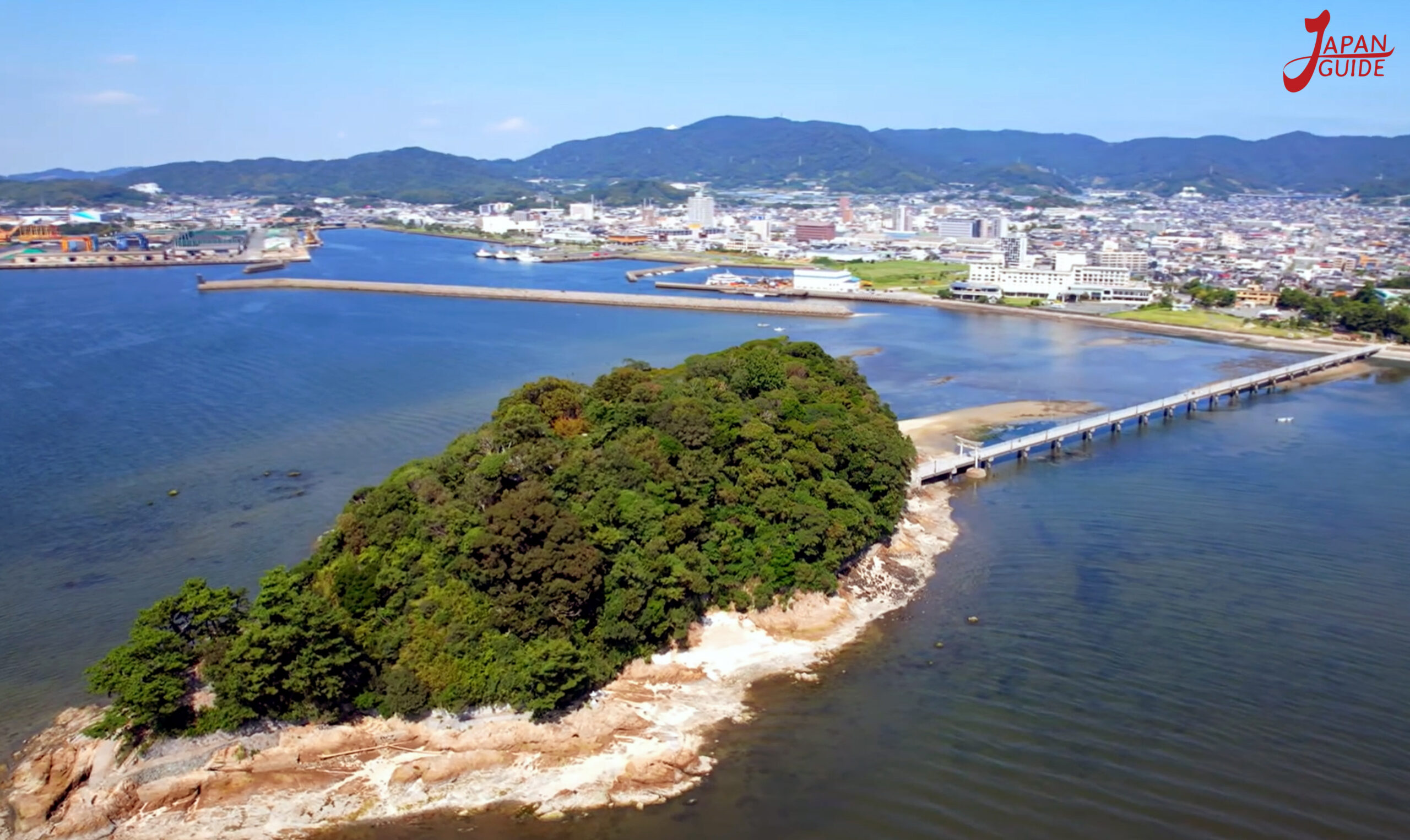

The island is connected to the coast by a 387 meter long bridge that crosses calm, shallow waters, and at the end you cross a stone gate (Torri), and this is the only place in Japan where a bridge passes directly through a gate Torii. And there is a legend that says that couples crossing Torri bring good luck.







After passing through the Torii, you will see an information board showing the island’s shrines.




To reach the top there are 101 stone steps, a short and steep climb up a flight of stairs surrounded by flags and some monuments, the island has five Shinto shrines, including the famous Yaotomi Shrine, one of the best-known shrines in Japan, dedicated to Benten, the Goddess of music and artists.


At the entrance is the CHOZUYA stone fountain, it is a source of water for the faithful to purify their bodies and minds before heading to the sanctuary, this type of fountain is considered a blessing for the Japanese and is an ancient tradition.




Uga Shrine
When passing through the torri again you will find the first Sanctuary called Uga and its consecrated deity is Ukano Mitama no Kami, the god of food.


Daikoku Shrine
And next door is the Daikoku shrine, which supposedly brings blessings for business prosperity, and its enshrined deity is Okuninushino Mikoto.


Yaotomi Shrine
The next shrine is the largest and main one, the Yaotomi shrine which was founded by Emperor Antoku on March 18, 1181. The Yaotomi Shrine is known as Takeshima Benten and is considered one of the Seven Benzaiten Shrines of Japan and its enshrined deity It is Ichikishima Hime no Mikoto who blesses marriage and childbirth.

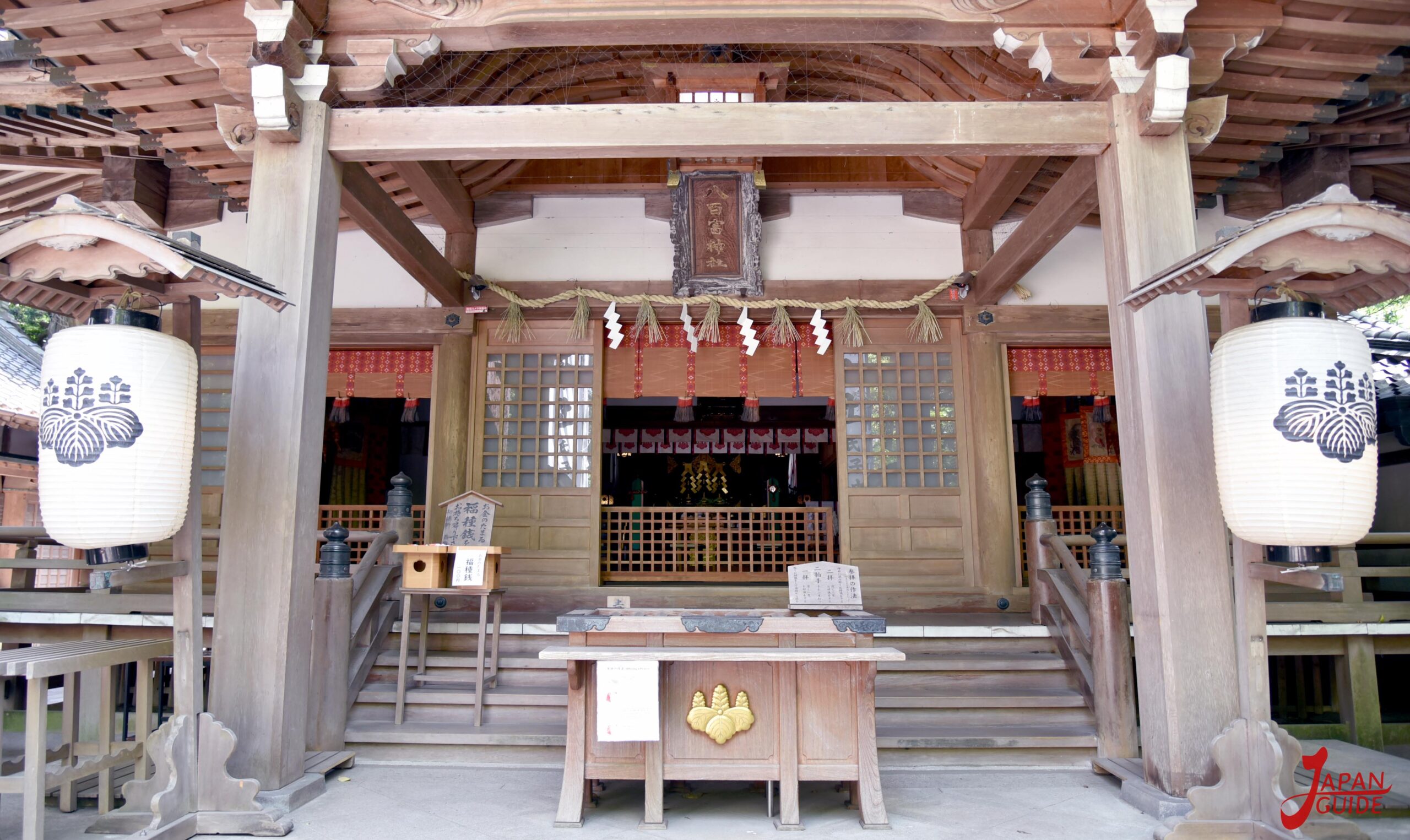

Chitose Shrine
And next door is the Chitose sanctuary, a small sanctuary dedicated to Fujiwara Toshinari, which brings blessings for longevity and study.
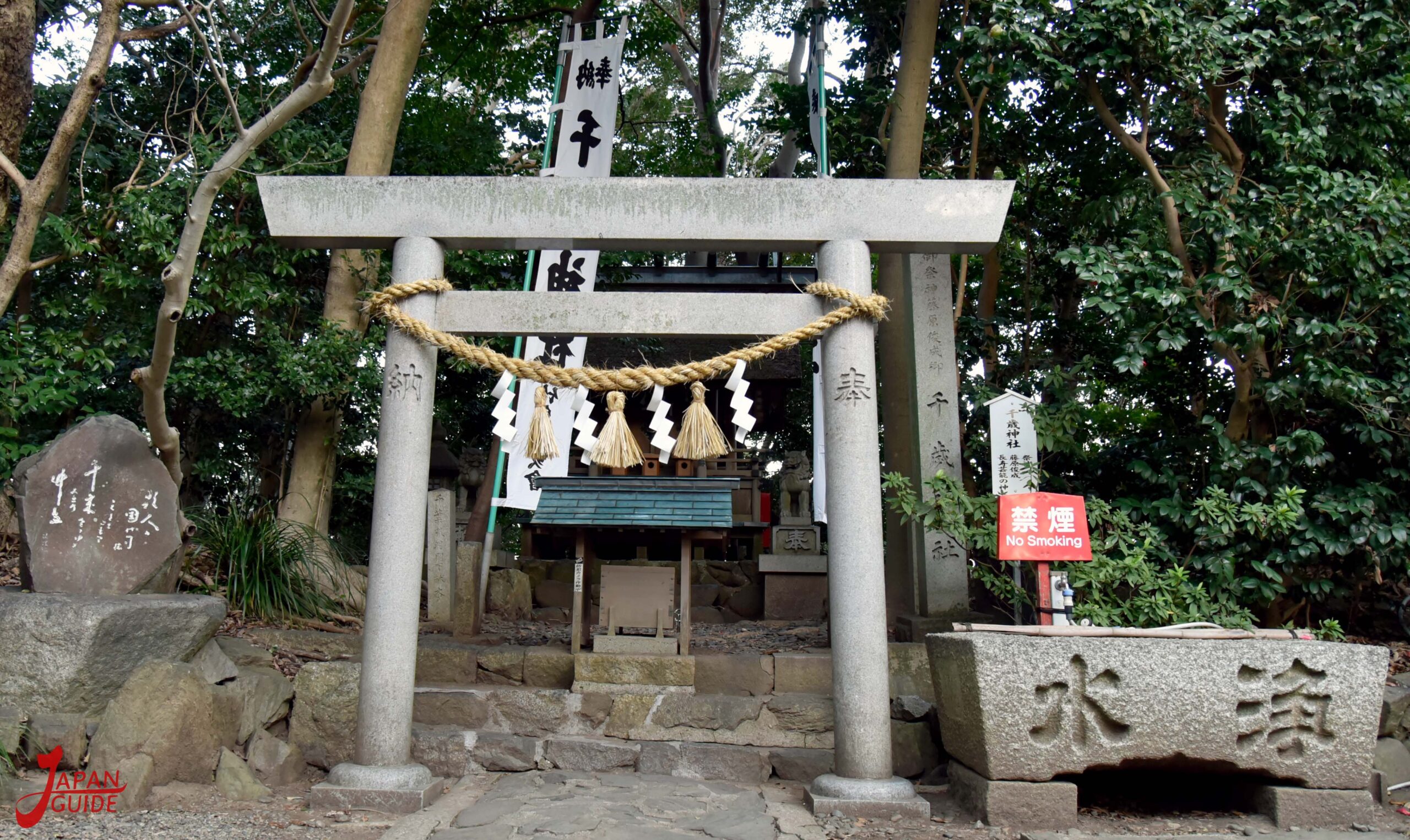

Hachidairyu Shrine
And passing through the corridor full of flags we arrive at the Hachidairyu Shrine, and its consecrated deity is Toyotamahiko no Mikoto, the god of the sea and rain and also says to protect the family, marital harmony and ward off evil spirits.
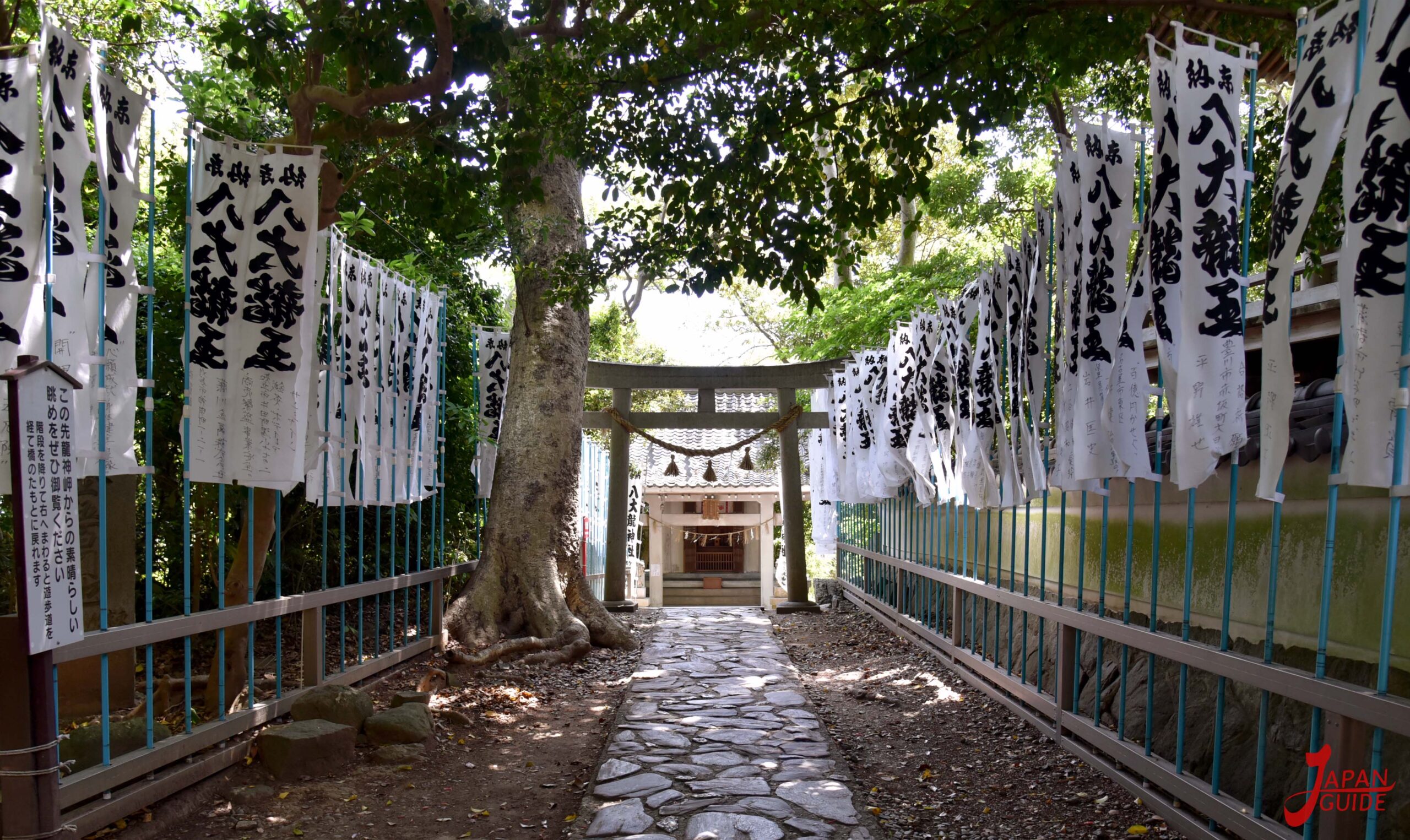


Following the path we will pass by the area where the emperor planted the bamboo, and he planted it as a sacred object, which is why the island came to be called “Takeshima”. Because TAKE means bamboo and SHIMA means island. This is how the name Takeshima came about.
Going down the stairs you will find the pillar that was erected 5 years after Takeshima island was declared a national natural monument with the data and date.

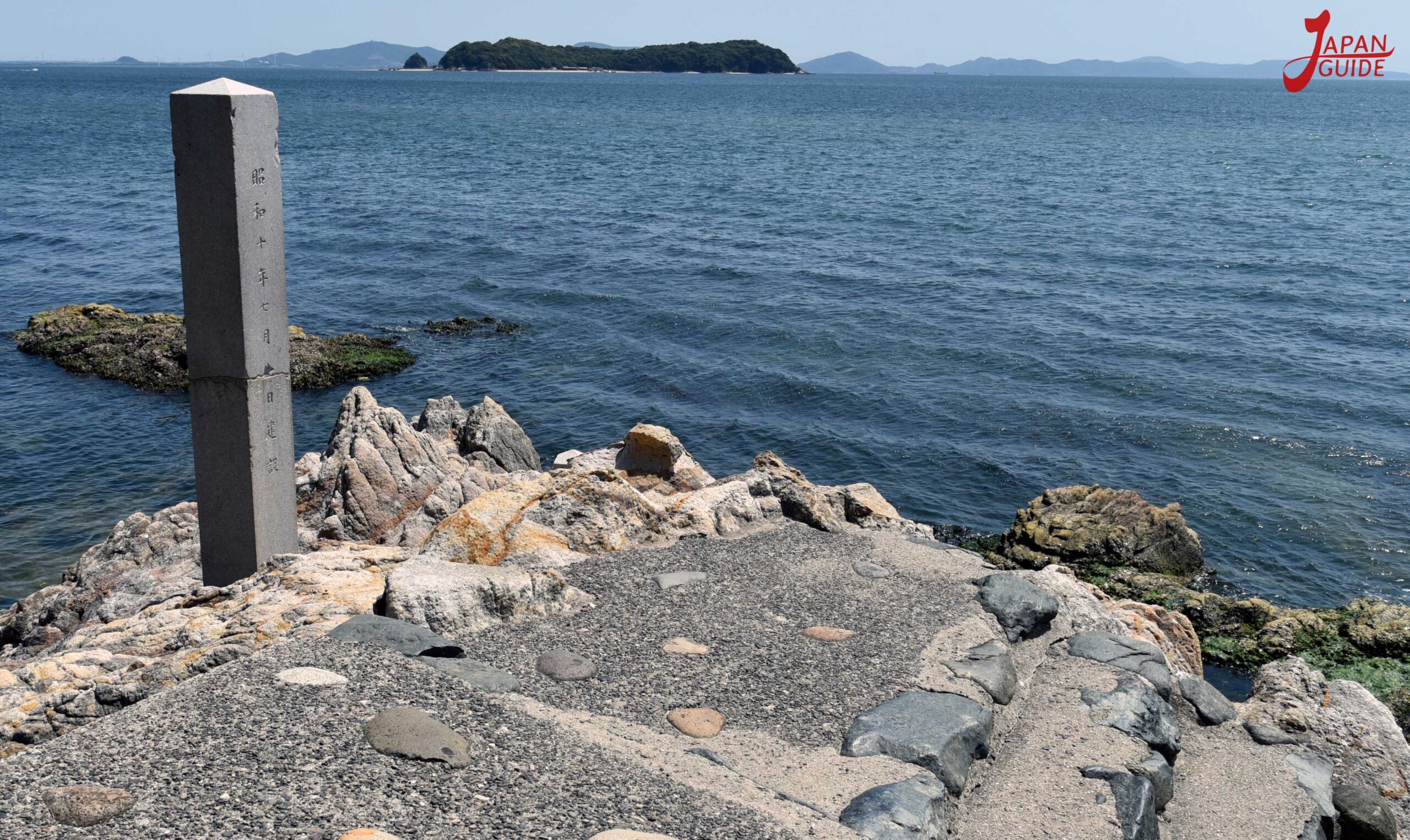
Leaving Pilar we can take a 360 degree turn, a 600 meter path around the island where we can enjoy the ocean and this paradise, as Takeshima has a privileged view of the coast and the neighboring islands of Mikawa and Oshima.






Near the bridge there is a statue of Emperor Antoku who founded the Yaotomi shrine and planted the bamboo, giving the island its name.



At the end of the day you can enjoy the sunset behind the bridge or the island depending on the season.


At night the sanctuaries are closed but the bridge and the island is lit up, so couples take the opportunity to go for a romantic walk.










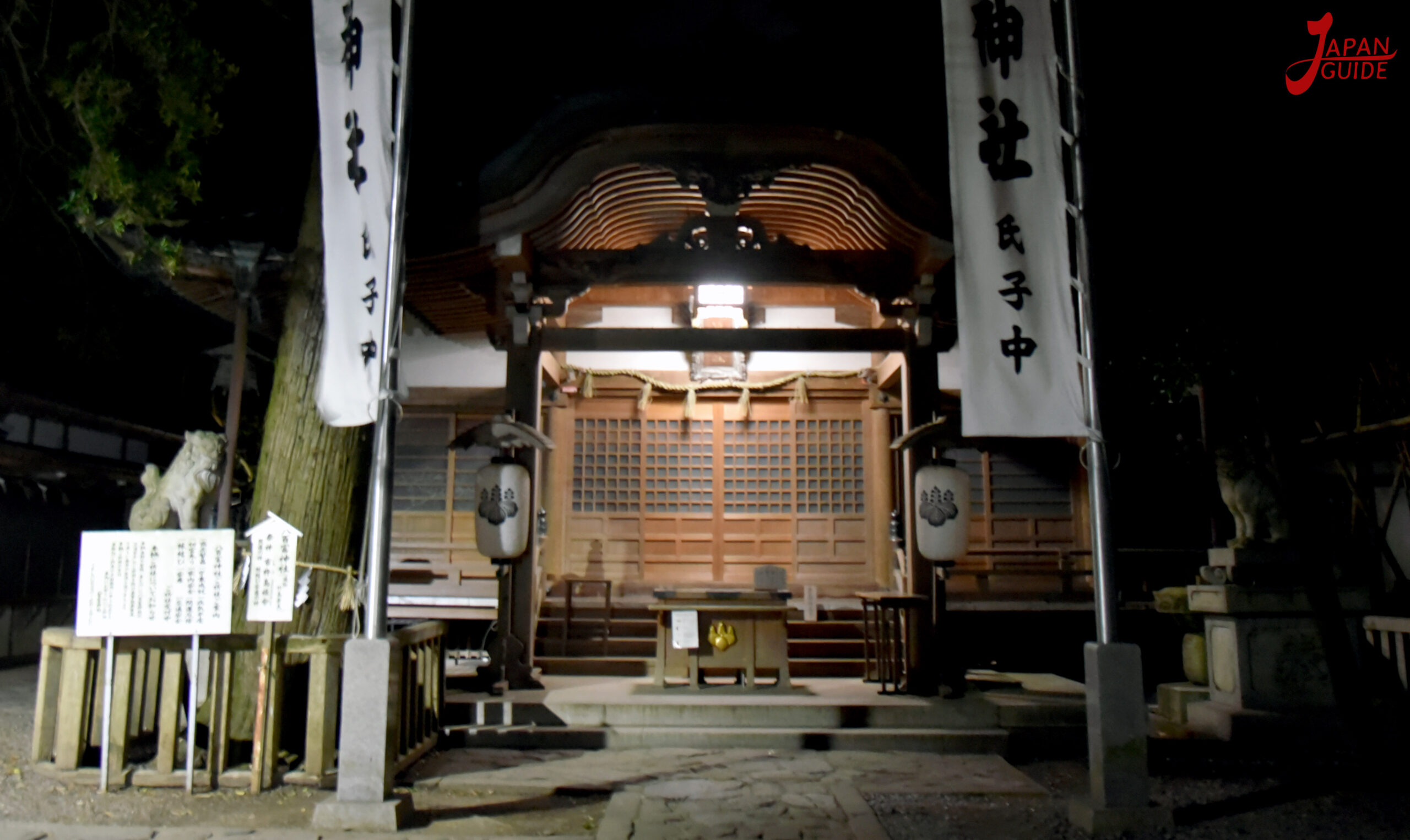
- Location: Gamarori, Aichi (Takeshima).
- Attractions: Island and Sanctuaries.
- Free entrance.
- Parking: 300 yen Saturday, Sunday and holidays (free on weekdays).
- WC: Available.
Seafood Season
The seafood hunting season is very famous for its high quality and flavor, attracting around 30 thousand visitors every year between April and May.
Shellfish hunting is an adventure where adults and children have fun looking for shellfish in front of the island on the bridge side when the tide goes out.
- Event: Shellfish hunting.
- Date: end of April to end of May.
- Fee: Adults and children 1,500 yen up to 2 kg.
- Additional Fee: 700 yen per 1 kg.
- Parking: 500 yen Saturday, Sunday and holidays (weekdays free).
- WC: Available.
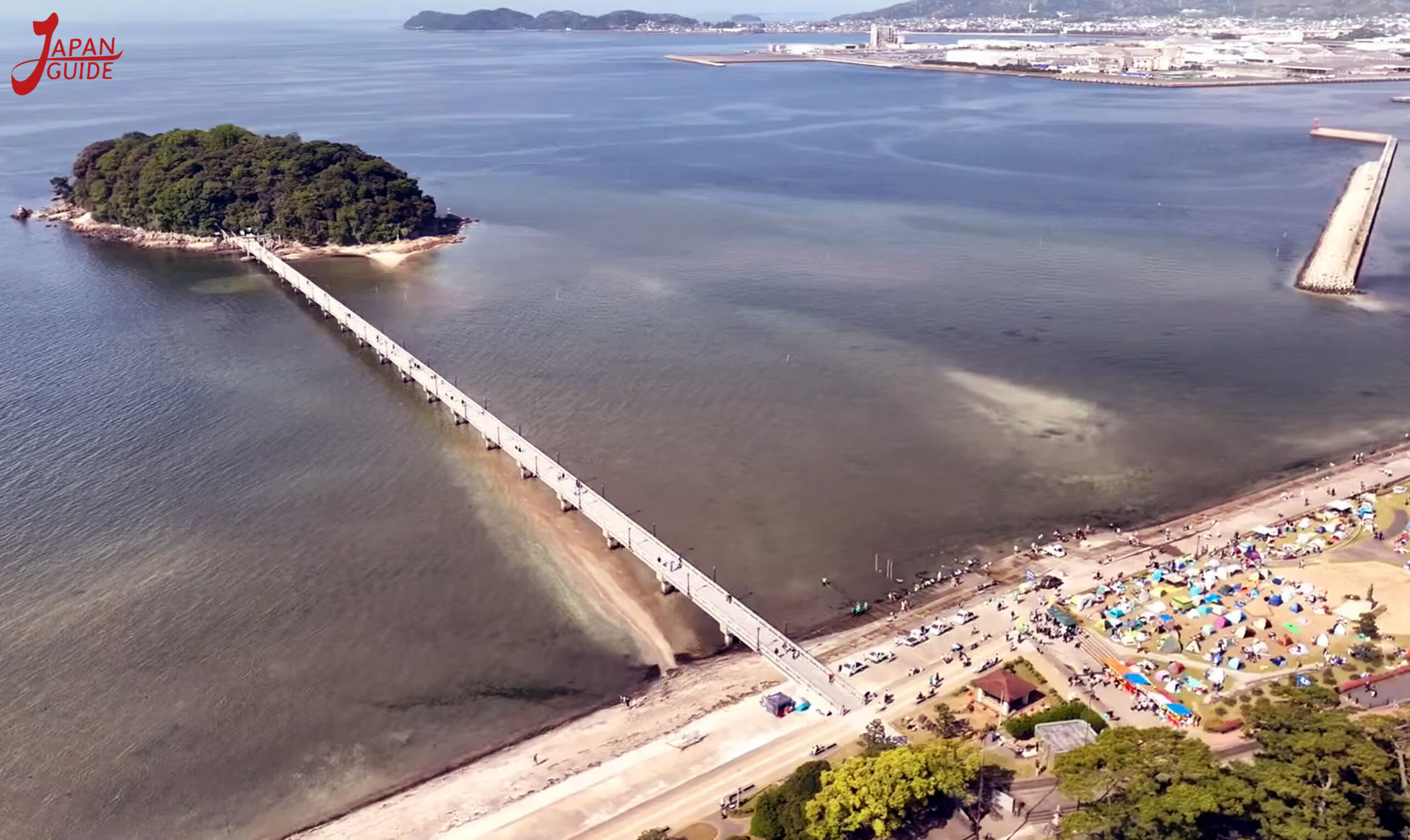
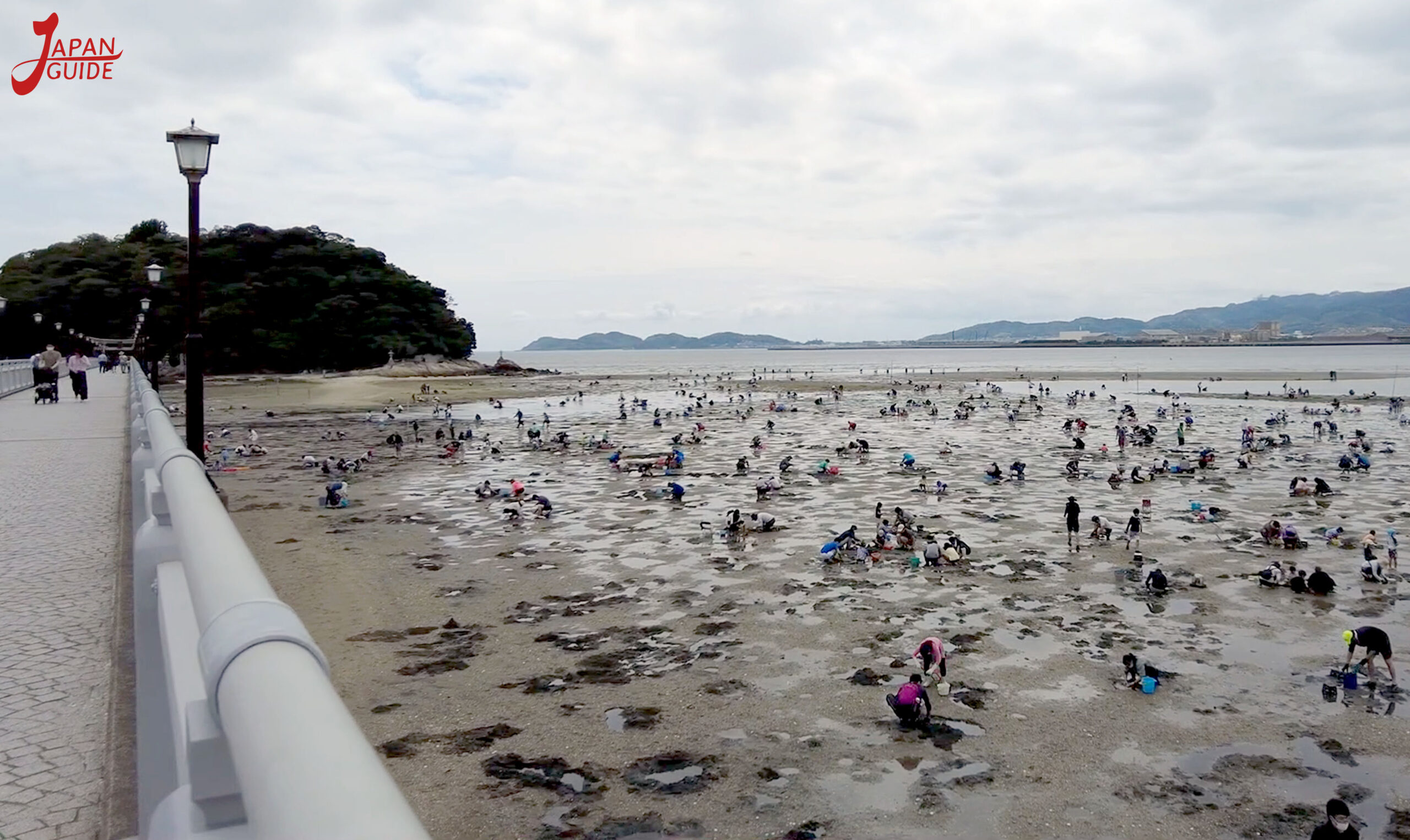
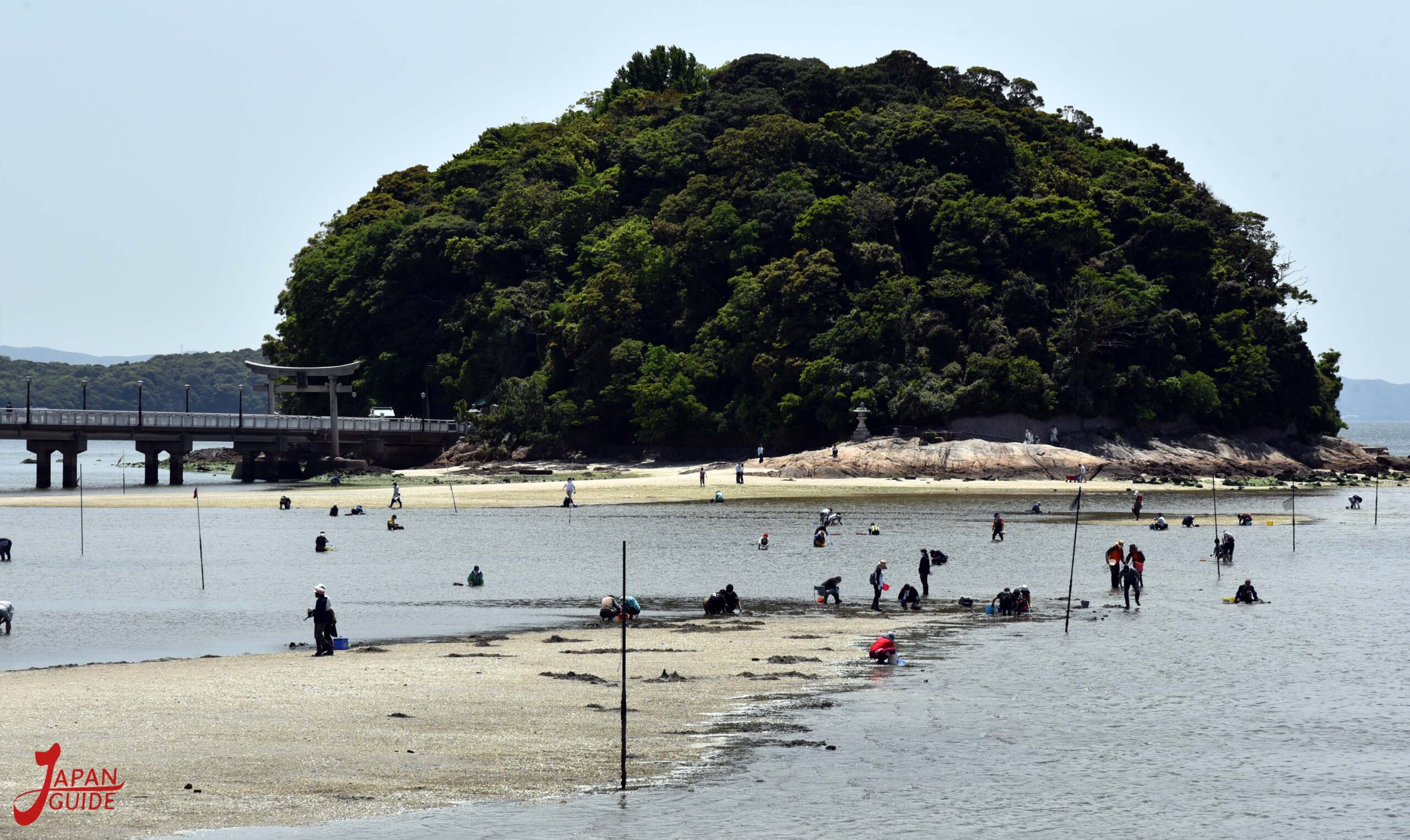
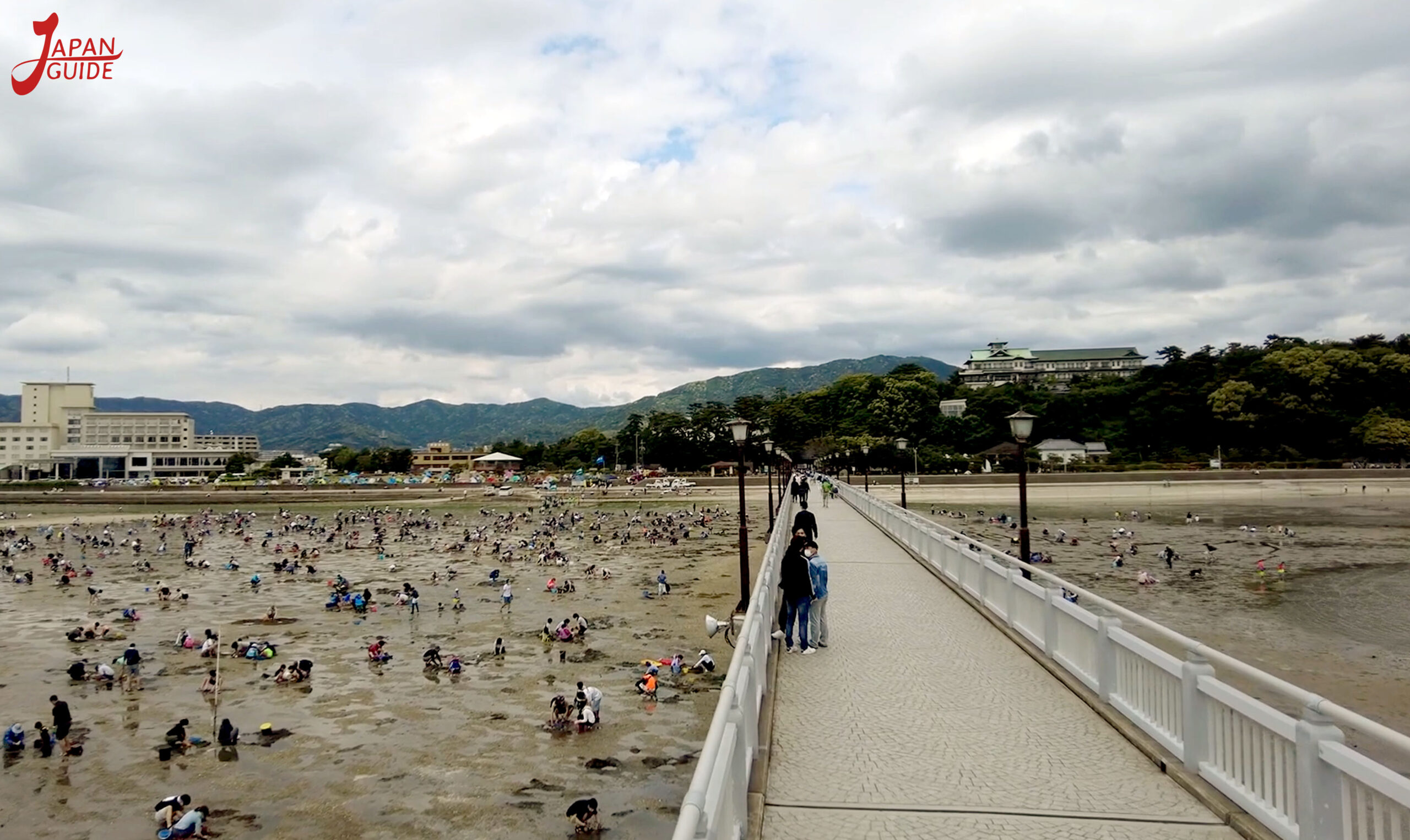

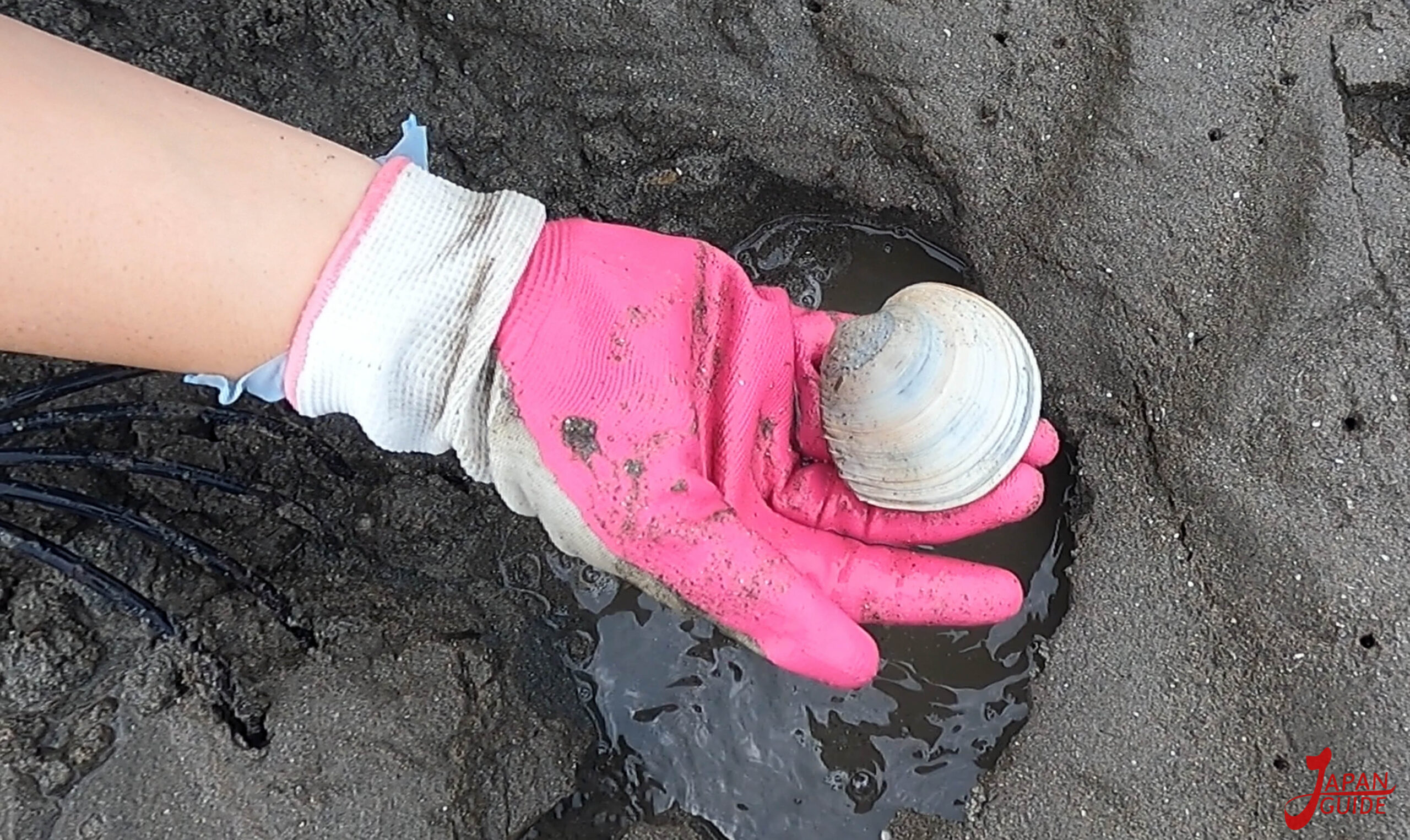
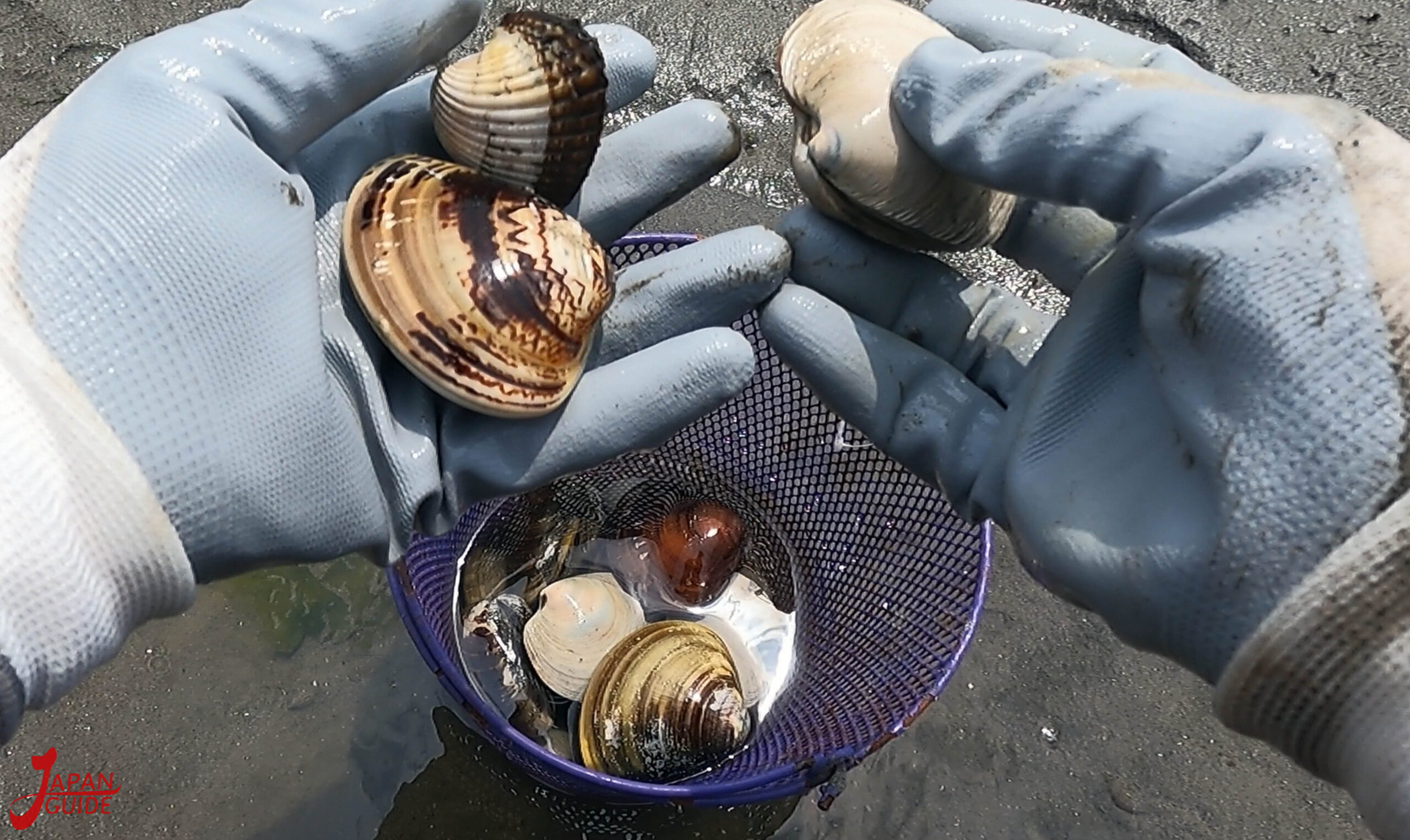
Parking

Aichi Gamagori Takeshimacho 3-15
